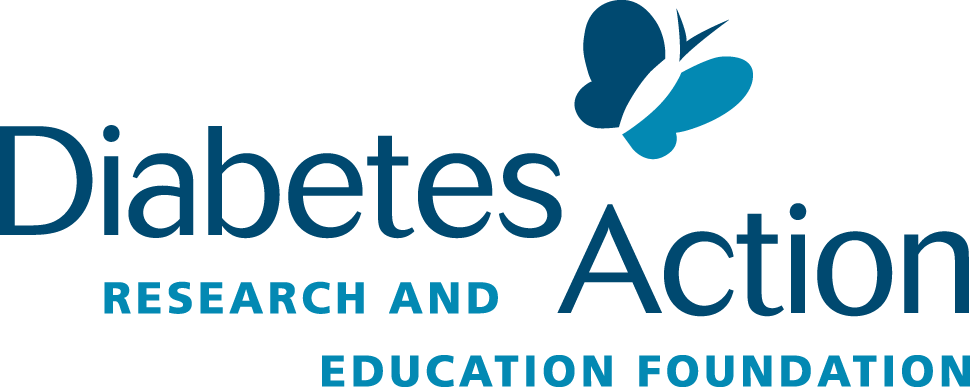
past Research
2021
Home > Research > Past Research > 2021
Cure for Type 1 Diabetes
A PROGRAM FOR THE CURE OF TYPE 1 DIABETES USING A GENERIC DRUG: PHASE II
Researcher:
Denise L. Faustman, MD, PhD., Associate Professor
Harvard Medical School and Director Immunobiology Laboratory
Massachusetts General Hospital
Charlestown, MA
Purpose:
In August 2012, results of the Phase I trial showed that the pancreas of long-term diabetics was able to transiently make insulin after two doses of the Bacillus Camlette-Guerin (BCG) vaccine. In 2018 a follow up report on a total of 232 participants both treated and untreated with BCG, published in the journal Vaccines, showed positive results in lowering blood sugars in subjects with type 1 diabetes to almost normal levels while also reducing the amount of insulin needed about one-third after 5 to 8 years from the initial treatment with the BCG vaccine without any reports of severe hypoglycemia. The 2015 FDA approved Phase II clinical trial, which is now fully enrolled with 150 participants with long-term type 1 diabetes, will determine the dose and frequency of doses required to reverse type 1 diabetes. It is still necessary to obtain funding to track these patients for an additional two years with the ultimate goal of bringing BCG to market as an approved treatment for type 1 diabetes. Five additional clinic trials with BCG/placebo to over 150 subjects are currently ongoing.
TACKLING BETA CELL DEATH IN TYPE 1 DIABETES
Researcher:
Angela Lombardi, Ph.D.
Assistant Professor
Albert Einstein College of Medicine
Bronx, NY
Purpose:
Over the past four decades, the number of people with Type 1 diabetes (T1D) has increased by 4% per year, making it an important public health challenge. Currently, no curative therapy exists for T1D and the only available treatment is insulin replacement, which, though life saving, is often associated with fatal high or low glucose levels. The aim of this research project is to treat or prevent autoimmunity in T1D by blocking antigen presentation using novel D-peptides, specifically by blocking the HLA-DQ8 peptide binding pocket from presenting diabetogenic peptides to auto reactive T-cells. Our hypothesis is that D-peptides are specific to the cause of T1D, and should not cause general immunosuppression, reducing or eliminating the need for insulin replacement therapy. The novel D-peptide approach can be easily expanded to patients with other autoimmune diseases carrying HLA-DQ8 or other HLA class II alleles, therefore, representing a new strategy to treat autoimmunity in general.
UNDERSTANDING THE ROLES OF CATHEPSIN H IN TRIGGERING TYPE 1 DIABETES
Researcher:
Jody Ye, PhD
Instructor of Endocrinology
Albert Einstein College of Medicine
Bronx, NY
Purpose:
The etiology of Type 1 Diabetes (T1D) has both genetic and environmental components, but their underlying mechanisms are largely unknown. A better understanding of these mechanisms will help the development of innovative therapies to improve beta-cell function. A T1D candidate gene, CTSH, encodes the Cathepsin H enzyme (CatH) in beta-cells. CTSH is associated with early diabetes onset and rapid loss of first-phase insulin response. Dr. Ye’s previously work suggest that CTSH may need to be expressed at an optimal level, both low and high CatH could lead to beta-cell damage. CTSH can be suppressed by inflammatory cytokines, which subsequently promote beta-cell death. However, high CTSH was found in individuals carrying the T1D susceptible variant. In the present study, Dr. Ye will investigate whether high CatH renders beta-cells a greater immunogenicity, triggering T1D. The results of this work could lead to the development of CatH blockers to prevent / delay diabetes.
diabetes prevention
IDENTIFICATION OF BIOACTIVE COMPOUNDS FOR THE PREVENTION AND TREATMENT OF T2D
Researcher:
Dongmin Liu, PhD
Professor
Virginia Polytechnic Institute & State University
Blacksburg, VA
Purpose:
Type 2 diabetes (T2D) is one of the fastest-growing health problem in the US. It is a result of insulin resistance and loss of insulin secreting beta-cells. The goal of this research is to identify low-cost, natural compounds to prevent and treat T2D. Dr. Liu discovered for the first time that hispidulin, a compound isolated from the herb Salvia plebaia, which is also abundant in oregano, acts in the gut to promote beta-cell function and ameliorates T2D, while sulforaphane, a small molecule derived from cruciferous vegetables, is a potent insulin sensitizer in the body of T2D mice. In this project Dr. Liu will investigate whether a combination treatment with hispidulin and sulforaphane is more effective in preventing T2D development by simultaneously improving insulin sensitivity and preserving functional beta-cell mass in T2D mice. The results from this grant could lead to developing strategy for using these natural products as an alternative or complementary therapy for T2D.
UNDERSTANDING BCAA REGULATION - A STEP TOWARD DECIPHERING DIABETES
Researcher:
Andrew C. Shin, Ph.D.
Assistant Professor
Director, Mouse Metabolic Phenotyping Facility
Texas Tech University
Lubbock, Texas
Purpose:
Branched-chain amino acids (BCAAs) are essential amino acids that our bodies do not produce, thus we need to obtain through diet. Recent studies show that circulating BCAAs are elevated in obese and diabetic individuals, and that BCAA supplementation through diet can lead to insulin resistance and abnormally high glucose levels. These findings indicate that BCAAs may have a causal role in the development of obesity and diabetes, but how and why they are elevated to begin with has been a mystery. Dr. Shin has discovered earlier that insulin action in the brain region called the mediobasal hypothalamus (MBH) controls circulating BCAAs. The present study proposes to identify and test the role of specific neuronal populations within the MBH for BCAA regulation. Findings from this study would elucidate the neuronal BCAA regulatory pathway and help develop new pharmacological/dietary strategies to decrease BCAAs in order to prevent/treat metabolic disorders.
COMPLEMENTARY / NUTRITION RESEARCH
INVESTIGATE THE POTENTIAL OF CONTINUOUS DIETARY PRESENCE OF HIGH DOSES OF BOTH VITAMINS C AND E TO INTERVENE TYPE 2 DIABETES IN ZUCKER DIABETIC FATTY RATS
Researcher:
Guoxun Chen, Ph.D.
Associate Professor, Dept. of Nutrition
The University of Tennessee, Knoxville
Knoxville, TN
Purpose:
The numbers of patients with type 2 diabetes (T2D) in the U.S. is rising. It is urgent to find alternative, complementary, and nutritional therapies for the prevention and treatment of T2D. Oxidative stress contributes to abnormalities of T2D. Therefore, antioxidants have been implied to have anti-diabetic functions. Clinical trials using high doses of Vitamin C or E individually have shown some promising results in T2D patients. However, whether a continuous dietary presence of vitamin C and/or E is critical for their anti-diabetic effects remains unanswered. Dr. Chen’s research aims to investigate the effects of a combination of high doses of dietary vitamins C and E on the development of type 2 diabetes in Zucker diabetic rats, a well-known T2D model. The results will lead us to use commonly available antioxidants, vitamins C and E, as nutritional therapies to prevent and treat diabetes and its complications.
GLYCEMIC INDEX AND POST-PRANDIAL INFLAMMATION IN ADOLESCENT TYPE 1 DIABETES
Researcher:
Robert P. Hoffman, MD
Professor of Pediatrics
Abigail Wexner Research Institute at Nationwide Children’s Hospital|
Columbus, Ohio
Purpose:
Cardiovascular disease is the major cause of death in patients with type 1 diabetes. Increased inflammation causes future atherosclerosis and cardiovascular disease. Inflammation increases with increased glucose following a meal. Adolescents with type 1 diabetes have increased inflammation. The glycemic index quantifies the expected rise in glucose for a specific food 2 hours after a meal with a smaller increase for low glycemic index foods. The effects of low glycemic index meals on inflammation following a meal have not been studied in adolescents with type 1 diabetes. Inflammation before and after low and high glycemic index meals will be studied in 20 adolescents with type 1 diabetes. Changes in vascular and renal function will also be measured. If improvements in inflammation, vascular and renal function are found, this would strongly indicate that low glycemic index diets have the potential to reduce complications in type 1 diabetes.
COMPLEMENTARY MANUKA HONEY EMBEDDED DERMAL REGENERATION TEMPLATES TO IMPROVE DIABETIC WOUND HEALING
Researcher:
Laurie P. Shornick, PhD
Associate Professor of Biology
Saint Louis University
St. Louis, MO
Purpose:
Diabetic patients often develop non-healing foot ulcers that result in lower limb amputations. Unfortunately, the 5 year survival rate after lower limb amputation is less than 50%, so there is a critical need to develop wound dressings that will improve healing. Honey has been used for centuries as a complementary treatment for wound healing; however, it is sticky and difficult to apply. When honey warms to body temperature, it may also leak out of the wound. Dr. Shornick proposes an innovative three-dimensional wound dressing containing New Zealand manuka honey which has special properties. The dressing will provide a structure for cells to migrate into the wound, and the honey will provide anti-bacterial protection and will promote the formation of new tissue and blood vessels. Because pigs have skin very similar to human skin, a diabetic pig model will be used to test the efficacy of the honey-embedded wound dressings.
NOVEL FUNCTIONS OF ROSMARINIC ACID AND ITS ANALOG AS DIABETES-PREVENTION NUTRACEUTICALS; IN VIVO EFFICACY STUDIES
Researcher:
Bin Xu, Ph.D.
Assistant Professor
Principal Investigator
Biomanufacturing Research Institute and Technology Enterprise (BRITE)
North Carolina Central University
Durham, NC
Purpose:
The goal of this project is to investigate the novel functions of botanical compound rosmarinic acid (RA) and its analog RA-amide, in the prevention and treatment of diabetes and its complications. Due to the growth of the aging population and the modern sedentary lifestyle, type 2 diabetes (T2D) and related neurodegeneration are reaching epidemic proportions. Currently, there is no known cure for these diseases. One potential molecule link between these diseases is a molecule called amylin. Excessive secretion of this molecule in T2D patients can lead to the formation of toxic aggregates, which can deposit in the pancreas and the brain and cause damage to these tissues. Dr. Xu discovered that both RA and its analog RA-amide potently inhibit amylin aggregation and reduces aggregation-induced toxicity in vitro. This study will determine how effective RA and RA-amide are in ameliorating diabetes and related neurodegeneration in a diabetic animal model.
Paper published 2022
Paper published 2021
Paper published 2021
TREATING AND PREVENTING COMPLICATIONS
ABILITY OF 12 WEEKS MODERATE EXERCISE AND/OR GENISTEIN (SOY) TO REVERSE HYPERGLYCEMIA, HYPERINSULINEMIA, FATTY LIVER DISEASE AND MICROBIOME CHANGES INDUCED BY CHRONIC CONSUMPTION OF HIGH FAT HIGH SUGAR DIET
Researcher:
Layla Al-Nakkash, Ph.D.
Professor of Physiology
Midwestern University
Glendale, AZ
Purpose:
Clinically, millions of individuals have type 2 diabetes or obesity-related diabetes, and the impact to overall health is significant. These disorders are complex and provision of effective treatments is difficult. Dr. Al-Nakkash will use a mouse model of diabetic-obesity; mice will be given a “Western diet” by feeding them a high amount of fat and sugar for three months. At this time point in time, the lab will examine the effects of either consuming genistein (a naturally occurring compound found in soy) ,participating in regular moderate exercise (or both), or merely eliminating fat and sugar in the diet, on key markers of diabetes, obesity fatty liver and gut health. Dr. Al-Nakkash’s lab will use standard laboratory techniques to assess both gut and overall health in this model of type 2 diabetes. This research will aid in the understanding of how exercise and soy can be of benefit to reverse diabetic-obesity.
INVESTIGATING THE INHIBITORY ROLE OF SKELETAL MUSCLE PHOSPHATASES IN DISTAL SIGNALING OF OBESE INDIVIDUALS
Researcher:
Leslie Consitt, Ph.D.
Associate Professor
Ohio University Heritage College of Osteopathic Medicine
Athens, Ohio
Purpose:
Dr. Consitt has been studying glucose uptake in skeletal muscle, the primary target for insulin action, with a focus on distal insulin signaling such as AS160. The current study seeks to identify the protein phosphatases (PPS) that inhibit insulin-stimulated AS160 phosphorylation in humans, and difference in the interaction of Ppl and AS160 between lean and obese humans. In the long run, chemicals targeting PPS might be used to alleviate insulin resistance and treatment of type 2 diabetes. Based on the previous results in rats demonstrating PP1 as a potential inhibitor of AS160, Dr. Consitt seeks to confirm that this is also true in humans as well as further identify the subtypes of PPS involved. With solid preliminary data, Dr. Consitt hypothesizes that obese insulin-resistant humans have increased PP1alpha-AS160 interaction in skeletal muscle; decreasing PP1alpha can increase insulin-stimulated AS160 phosphorylation. Dr. Consitt is especially interested in using this project for outreach and education of the Athens, Ohio community.
NEW INSIGHTS IN THE PATHOGENESIS OF DIABETES MELLITUS
Researcher:
Gaetano Santulli, MD
Assistant Professor of Medicine
Albert Einstein College of Medicine
Bronx, NY
Purpose:
The main goal of this project is to understand the molecular mechanisms underlying the pathogenesis of diabetes in patients affected by COVID-19. The role of diabetes in COVID-19 is two-fold: not only do people with diabetes present an augmented risk of a severe outcome of COVID-19, but COVID-19 has been shown to also increase the risk of developing diabetes. Dr. Santulli’s hypothesis is that the coronavirus responsible for COVID-19 is causing endothelial dysfunction and that extracellular vesicles secreted by impaired endothelial cells can cause beta cell dysfunction. Dr. Santulli’s lab has preliminary data supporting this hypothesis and has identified some specific molecules contained in endothelial microvesicles that can be targeted to prevent and cure the onset of diabetes in COVID-19 patients. Moreover, the unprecedented relationship between endothelial cells and pancreatic beta cells can also be harnessed and targeted also in diabetes mellitus non caused by COVID-19.
TESTING NOVEL IMMUNOTHERAPY TO TREAT DIABETES-INDUCED KIDNEY FAILURE
Researcher:
Kai Y. Xu, Ph.D.
Associate Professor of Surgery
University of Maryland School of Medicine
Baltimore, MD
Purpose:
Diabetes causes kidney failure which results in the kidneys no longer being able to remove waste from the body. (Na+ + K+)-ATPase (NKA) is a key enzyme found in large amounts in kidneys. Studies have shown that dysfunction of NKA is associated with diabetic kidney failure, indicating that NKA activity is essential to kidney function. Dr. Xu has discovered NKA activator and developed a NKA activator-based immunotherapy. Recent studies reveal that newly developed immunotherapy protects kidney function against progression of type 1 diabetes-induced kidney failure in female NOD mice. Dr. Xu hypothesizes that this immunotherapy may be a universal disease-modifying intervention for both type-1 and type-2 diabetes-induced kidney failure. The proposed investigation will test the hypothesis and examine the efficacy of immunotherapy on both type 1 and type 2 diabetes induced kidney failure. This study challenges the critical barrier of existing treatment by testing a novel immunotherapy to advance our knowledge and improve human health.
ISLET CELL RESEARCH
CIRCADIAN REGULATION OF PANCREATIC ISLET-GUT AXIS IN DIABETES DEVELOPMENT
Researcher:
Li Wen, MD, PhD
Associate Professor in Medicine
Yale University School of Medicine
New Haven, CT
Purpose:
Dr. Wen’s lab recently discovered that pancreatic islets from the non-obese diabetic (NOD) mouse, an animal model for human type 1 diabetes, express a high level of biological clock genes. The expression of these genes changes at different times of the day. These same genes are in the gut of NOD mouse but they are expressed at very different times of the day compared with the pancreatic islets. Both the gut and pancreas are in the digestive system and they are vulnerable to be attacked by immune cells, which alter gut stability or damage the insulin-producing cells. In this study, Dr. Wen will investigate how the clock genes regulate the functions of pancreatic islets and gut differently, with the ultimate goal to provide new knowledge to improve the effectiveness of existing therapy and to design a more effective new therapy to treat or prevent type 1 diabetes.
Paper published January 2021
Paper published June 2021
Paper published July 2021
Paper published August 2021
Paper published May 2022














